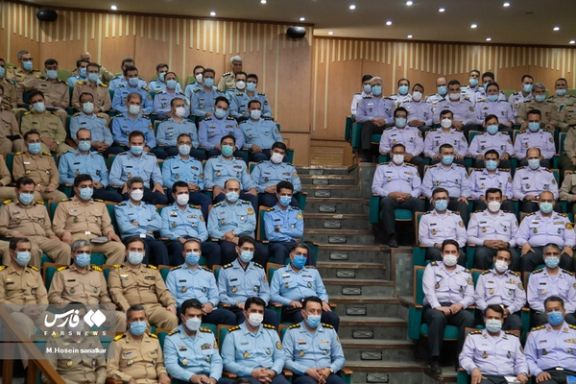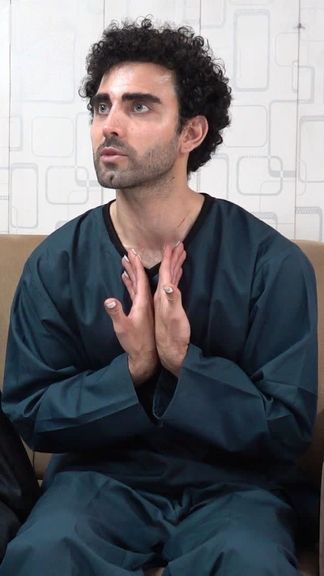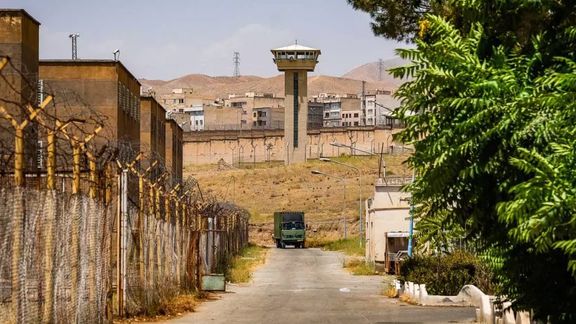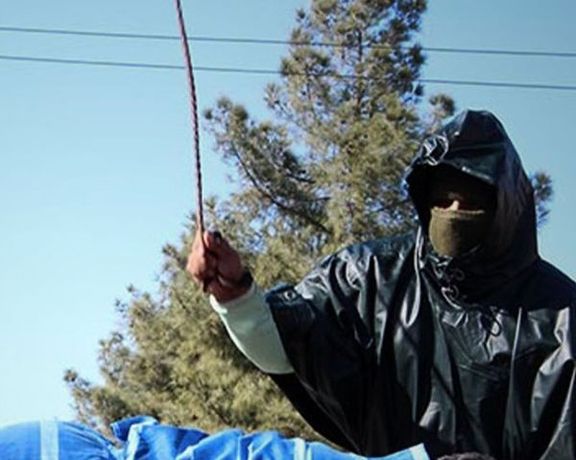Iranian Online Shop Manager Arrested Over Hijab Posts

A senior manager of an Iranian online store for android games and apps has been arrested over her online posts in defiance of mandatory hijab.

A senior manager of an Iranian online store for android games and apps has been arrested over her online posts in defiance of mandatory hijab.
Sabereen News, an Arabic and Persian Telegram channel affiliated with the Revolutionary Guards, released a video showing the arrest of Soraya Rezai Mahvar,the R&D Manager of Myket.
The video also showcases images of tweets by Rezai Mahvar expressing her opposition to the compulsory hijab.
According to Iranian daily Sharq, she was arrested at her workplace last week. However, no information is available about the arresting authority or the reason for her detention.
Several online shopping platforms including online bookshop Taghcheh (Taaghche), online retailer Digikala, and marketing platform Azkey were shot down during the past few days not for their operations, but for the way their employees dressed in photographs posted on social media platforms. The companies Myket and Taaghcheare among the subsidiaries of the holding company Hasin.
Days after several online shopping platforms were shut down by the Iranian government over lack of hijab, the Judiciary claimed it had no role in the decision, revealing the chaos surrounding the way the government enforces compulsory hijab and controls online businesses and social media platforms.
Following the denials by various officials about their involvement in the closure of businesses, social media users noted the chaos in handling hijab and online activities in Iran and wrote that no one in the government is brave enough to accept responsibility for harsh measures.

The Islamic Republic of Iran is about to create its fourth full-fledged intelligence agency mainly to respond to growing domestic opposition and likely protests.
In fact, it is perhaps not accurate to say that the regime is creating a new agency, rather it is elevating the existing “protection and intelligence” department of its notorious Judiciary to an intelligence “Organization.”
The same process took place 13 years ago when the intelligence department of the Revolutionary Guard was elevated to the status of an ‘organization’ in the aftermath of mass protests in 2009. Since then, the IRGC’s intelligence arm has become the leading instrument for domestic repression.
Media in Tehran say that starting Sunday the Islamic Republic’s parliament will discuss a bill presented more than a year ago to officially elevate Judiciary’s intelligence organization. That would mean more power and budget for another instrument of repression amid the regime’s fear of renewed unrest as the first anniversary of last year’s Mahsa protests approaches.
Last December, a lawmaker commenting on the initiative said that gathering information and reports about sensitive cases “to counter the propaganda campaigns by the global arrogance” is part of the duties of the new organization, indicating that the body will also coordinate with other entities outside the judiciary’s apparatus. “Global arrogance” is a term used by the Islamic Republic to refer to the United States.
The clerical regime is known for its habit of creating parallel bureaucracies, having dozens of organizations for Islamic propaganda, or actually keeping two distinct militaries, the IRGC and the traditional army called Artesh in Persian.

Part of this modus operandi stems from the internal politics of the regime and the need to dole out power and perks to factions and players in its inner circles. But in some areas, such as intelligence it could be an authoritarian impulse not to trust any single organization with the security of the regime’s inner core.
Four decades ago, there was only one official domestic-foreign intelligence bureaucracy – the Ministry of Intelligence – or information, as the Persian word for both is interchangeable. Then came the IRGC and the police intelligence organizations, to be augmented now with Judiciary’s parallel arm.
Unlike Western countries, such as the United States, there is no sign of distinct areas of responsibility between the four top intelligence-security organizations. They all spy on citizens, arrest dissidents with or without a warrant, have their own offices in infamous prisons such as Tehran’s Evin penitentiary. They all interrogate, and torture political prisoners and extract forced confessions. The only discernible distinction is that the Ministry of Intelligence and the IRGC intelligence have extensive foreign operations.
Speaking of foreign espionage and black ops, there is, in fact, a fifth entity, the IRGC Quds Force, that controls tens of thousands of paid militia forces throughout the Middle East. These forces are used for espionage, political influence operations, intimidation of politicians and groups in other countries, and the use of force.
The Iranian regime, which also has smaller intelligence entities has a Council for Intelligence Coordination comprised of at least 13 to 16 separate active intelligence agencies, according to different sources. Most of these parallel agencies have strong ties with the IRGC and the judiciary as well as the office of the Supreme Leader. The intelligence minister, the interior minister, foreign minister, and the country’s chief justice are members of the body. The IRGC’s Intelligence Organization, and its Intelligence Protection Organization, and their counterparts in the traditional Army and Police force as well as cyber police are some of the other members.

Iranian actor Mohammad Sadeghi,who was arrested for criticizing morality police has been charged with "inciting people to commit acts of violence."
A source close to his family told the US-based Human Rights Activists News Agency (HRANA) that he was also charged with "encouraging people to engage in corruption and prostitution."
In mid-July, police raided Sadeghi’s apartment as he was live blogging about the return of hijab patrols – or the so-called 'morality’ police -- to the streets on Instagram, after a video had gone viral of a woman violently detained.
“Believe me, if I saw such a scene, I might commit murder,” he wrote in the caption of his video. "Why do you get paid? To take people's daughters into a van and arrest them?"
The agents broke into his house to arrest him, but he jumped from the third floor in a bid to escape. A dramatic chase ensued, which he filmed and streamed live on Instagram, in spite of the regime's attempts to ban the app.
In a new campaign to enforce mandatory hijab, morality police have now returned to the streets in full force after a brief few months' respite following the worst of the unrest which erupted in September after the death of Mahsa Amini in morality police custody.
Women continue to defy the official dress code, particularly in Tehran, despite the crackdown, with huge numbers seen across the country's public spaces from malls to universities with their hair uncovered as they flout the mandatory hijab rules.
Experts fear the renewed zeal of the morality police risks reigniting tensions.

Iran's judiciary has confirmed that it is relocating inmates from the Rajaei Shahr Prison in Karaj, as many believe its large land will be sold to developers soon.
“Prisoners of this prison, which is located in one of the best areas of Karaj, are being relocated to another prison,” the judiciary’s media center said in a statement on Thursday.
Rajaei Shahr (formerly Gohardasht) Prison, considered as one of the harshest prison environments in the country, is in Karaj, a city less than 30 kilometers west of the capital Tehran. Originally built before the Islamic Revolution of 1979 in the outskirts of Karaj, the prison is now in the middle of one of the city’s most expensive areas.
One reason why the prison lives in infamy is the massacre of hundreds of political prisoners there in 1988. Iran's first supreme leader, Ruhollah Khomeini, ordered the killing of prisoners who were members of MEK (The People's Mojahedin Organization of Iran), an armed opposition group, and also Marxists serving their sentences.
Since 2009, when thousands were arrested after a disputed election, many well-known political prisoners and activists were held at Rajaei Shahr alongside other prisoners most of whom were serving sentences for drug-related offenses.
On several occasions in the past two years, protesters have staged sit-ins outside Rajaei Shahr to prevent the execution of political and other prisoners.
“The plan to relocate prisoners ensues from the government’s fear of repetition of such [civil] resistance [to execution],” Seda-ye Shahrivar Twitter account which is dedicated to news of protests and dissent wrote, adding that security forces are planning to relocate prisoners of at least twenty major jail in provincial capitals across the country to remote prisons.
“In fact, the closure of Rajaei Shahr is meant to facilitate suppression, harassment and execution of prisoners, making people’s access to their imprisoned loved ones difficult, and increasing the distance between prisons from places where life is happening,” Seda-ye Sharivar wrote.
The judiciary’s statement did not mention videos posted on social media that show prisoners already being taken from Rajaei Shahr to the notorious Ghezel Hesar Prison. Social media reports indicate that some of last year’s protesters including Mohammad Beroghani who has been sentenced to death are among those transferred to Ghezel Hesar.
According to Seda-ye Sharivar, relocation of prisoners started on the evening of July 31 without prior announcement and since then at least 300 inmates, including many political prisoners, have been sent to Ghezel Hesar.
Ghezel Hesar, Iran's largest prison which houses around 20,000, is located in the Alborz Province, 20 km (12 miles) to the northwest of the capital Tehran, and is also near Karaj. Ghezel Hesar has mainly housed around 20,000 ordinary prisoners, four times more than it had been built for.
“This prison is among the evidence of the crime [mass execution of political prisoners in 1988] and its layout was repeatedly mentioned in the trial of Hamid Nouri [in Sweden],” senior journalist of Radio Zamaneh, Farzad Seifikaran, wrote about Rajaei Shahr, adding that any building development could obliterate some of the most important proof of the atrocities committed against political prisoners who were executed in thousands over a few months.
The government of President Ebrahim Raisi on June 22, 2022, allowed the judiciary to sell both Rajaei Shahr, an estate of nearly 600,000 sqm (150 acres), and pay the proceeds to the government.

Narges Mohammadi, a prominent imprisoned Iranian human rights activist has been handed down an additional one year jail sentence in a new verdict.
This latest decision by the judiciary of the Islamic Republic has increased her total sentence to 10 years and 9 months in prison, coupled with 154 lashes.
The verdict stems from Mohammadi's alleged offense of "propaganda against the system by giving a statement from inside the prison," as stated on her Instagram page. In the said statement, she voiced her protest against the "harassment and sexual abuse of women" in detention centers, and addressed a letter to Javaid Rehman, the Special Rapporteur on the Situation of Human Rights in the Islamic Republic of Iran.
This particular case is one of the five ongoing investigations against Narges Mohammadi, conducted by the Evin Security Prosecutor's Office.
Refusing to participate in the hearing of the new accusations, Mohammadi, the Deputy Director of the Defenders of Human Rights Centre (DHRC), boldly declared that she "does not recognize the Islamic Republic and its sham and deceptive courts," as conveyed in her Instagram post.
The preliminary verdict was communicated to Mohammadi while she remains detained in the women's ward of Evin prison. However, she did not sign the receipt of the verdict.
In recent months, despite her confinement, Mohammadi has been an outspoken advocate for the uprising of Iranians against the Islamic Republic. From inside the prison, she has openly condemned repression against protesting students, citizens, and the Baha'i community, among others.
Narges Mohammadi's imprisonment dates back to November 2021, and she continues to serve her sentence.

Iran's judiciary has dramatically increased lashing sentences against civil and political activists following the Mahsa uprising, according to Iran's Prison's Atlas.
The issuance of such sentences, part of the Islamic penal code, has quadrupled compared to the previous year, with at least 117 activists, including 13 women and 104 men, being sentenced to a total of 7,404 lashes, alongside 99 years and three months in prison and a fine of 1.16 billion rials (approximately $2300).
The charges leading to these sentences primarily involve "disturbing public order and publishing falsehoods with the intention of disturbing the public opinion," as per the Islamic Penal Code.
Comparing the current statistics to the period from September 2021 to October 2022, the judicial system had sentenced 29 political and civil activists, comprising 18 women and 11 men, to a total of 1,970 lashes, 32 years and 10 months in prison, and 510 million rials in fines.
The Atlas of Iranian Prisons strongly criticized the authorities for employing whipping, despite being aware of its physical and psychological harm, to suppress citizens and political opponents and maintain ideological control.
The increase in flogging sentences coincides with ongoing concerns about the treatment of protesters following the revolutionary uprising of Women, Life, Freedom. Many arrested protesters currently face the risk of execution, and the judicial system has already carried out death sentences against seven of them.
Disturbingly, numerous reports have emerged detailing incidents of rape, assault, and sexual harassment against some arrested protesters during the uprising. Moreover, several other detainees have suspiciously died shortly after their release from prison.